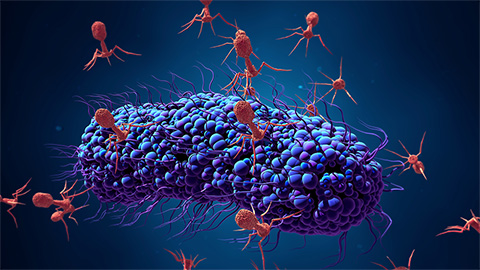Review delves into proximity proteomics
In a recent review article in Molecular & Cellular Proteomics, Payman Samavarchi–Tehrani and colleagues in the Gingras lab at Sinai Health Systems and the University of Toronto offer an introduction to proximity-dependent biotinylation, a key first step in proximity proteomics. The authors give researchers who are new to the field information about the natural history of biotinylation enzymes. They also offer insights into the mechanisms of these enzymes and new perspectives on future proximity proteomics experiments.
Traditional proteomics can provide information about the quantitative contents of a cell or tissue, but it sacrifices much information on the spatial organization of proteins within cells. Since protein activity often depends on location and interactions with other proteins, researchers have developed approaches such as proximity proteomics to obtain information about the environs of a protein of interest. Proximity proteomics methods developed in the past 10 years depend on fusing the protein of interest to an enzyme that will label nearby proteins with a chemical tag that then can be purified. After purification, mass spectrometry identifies the tagged proteins.
Most often, the chemical tag is biotin, a cofactor that is key to carboxylase enzyme activity in several metabolic pathways. Two types of enzyme are used for proximity-dependent biotinylation: peroxidases, used for methods such as APEX, and biotin ligases, used for methods such as BioID.

Ordinarily, biotin ligases append biotin to the carboxylases that need it as a cofactor. Biotin ligases found in cells have high specificity for their substrate proteins, but certain mutations reduce that specificity by decreasing the ligase enzyme’s affinity for a reactive intermediate. Such mutants lose their grip on the cofactor and can release a reactive biotin that can bind the next amine group it encounters — often on a nearby protein. When researchers pull down biotin after this reaction occurs, they can determine what proteins were localized in the neighborhood of the biotin ligase and, by extension, the protein it was tethered to.
The second enzyme family, the peroxidases, evolved to convert hydrogen peroxide to water by redox chemistry. In the presence of a biotin–phenol substrate and hydrogen peroxide, they can make a short-lived free radical that reacts with certain amino acid side chains, once again tagging nearby proteins for later identification.
As proximity proteomics has grown in popularity, both types of enzyme have been the targets of extensive engineering and molecular evolution to coax them toward the activity profiles users want. The authors review the available enzymes and discuss experimental design considerations, such as choice of control conditions and how to get rid of what they call “frequent flyer” proteins that often are isolated nonspecifically.
Enjoy reading ASBMB Today?
Become a member to receive the print edition four times a year and the digital edition monthly.
Learn moreGet the latest from ASBMB Today
Enter your email address, and we’ll send you a weekly email with recent articles, interviews and more.
Latest in Science
Science highlights or most popular articles

Bacteriophage protein could make queso fresco safer
Researchers characterized the structure and function of PlyP100, a bacteriophage protein that shows promise as a food-safe antimicrobial for preventing Listeria monocytogenes growth in fresh cheeses.

Building the blueprint to block HIV
Wesley Sundquist will present his work on the HIV capsid and revolutionary drug, Lenacapavir, at the ASBMB Annual Meeting, March 7–10, in Maryland.

Gut microbes hijack cancer pathway in high-fat diets
Researchers at the Feinstein Institutes for Medical Research found that a high-fat diet increases ammonia-producing bacteria in the gut microbiome of mice, which in turn disrupts TGF-β signaling and promotes colorectal cancer.

Mapping fentanyl’s cellular footprint
Using a new imaging method, researchers at State University of New York at Buffalo traced fentanyl’s effects inside brain immune cells, revealing how the drug alters lipid droplets, pointing to new paths for addiction diagnostics.

Designing life’s building blocks with AI
Tanja Kortemme, a professor at the University of California, San Francisco, will discuss her research using computational biology to engineer proteins at the 2026 ASBMB Annual Meeting.

Cholesterol as a novel biomarker for Fragile X syndrome
Researchers in Quebec identified lower levels of a brain cholesterol metabolite, 24-hydroxycholesterol, in patients with fragile X syndrome, a finding that could provide a simple blood-based biomarker for understanding and managing the condition.

